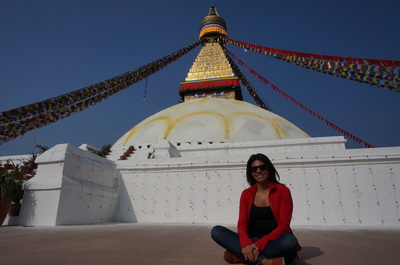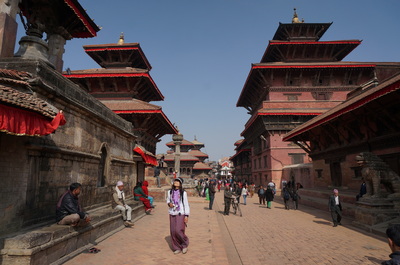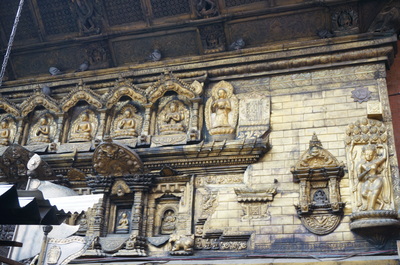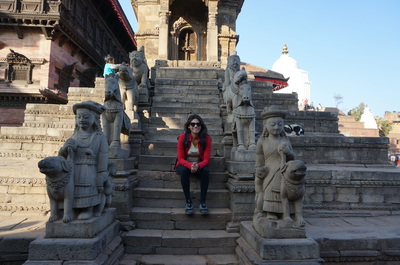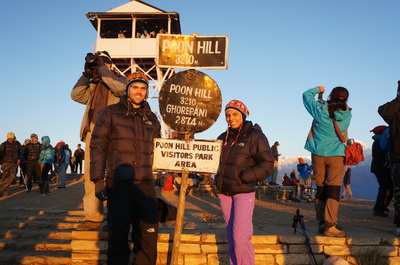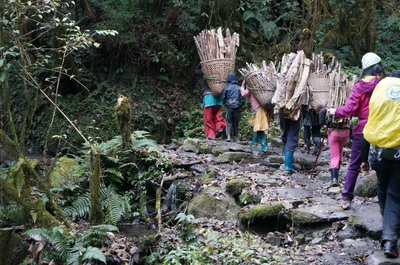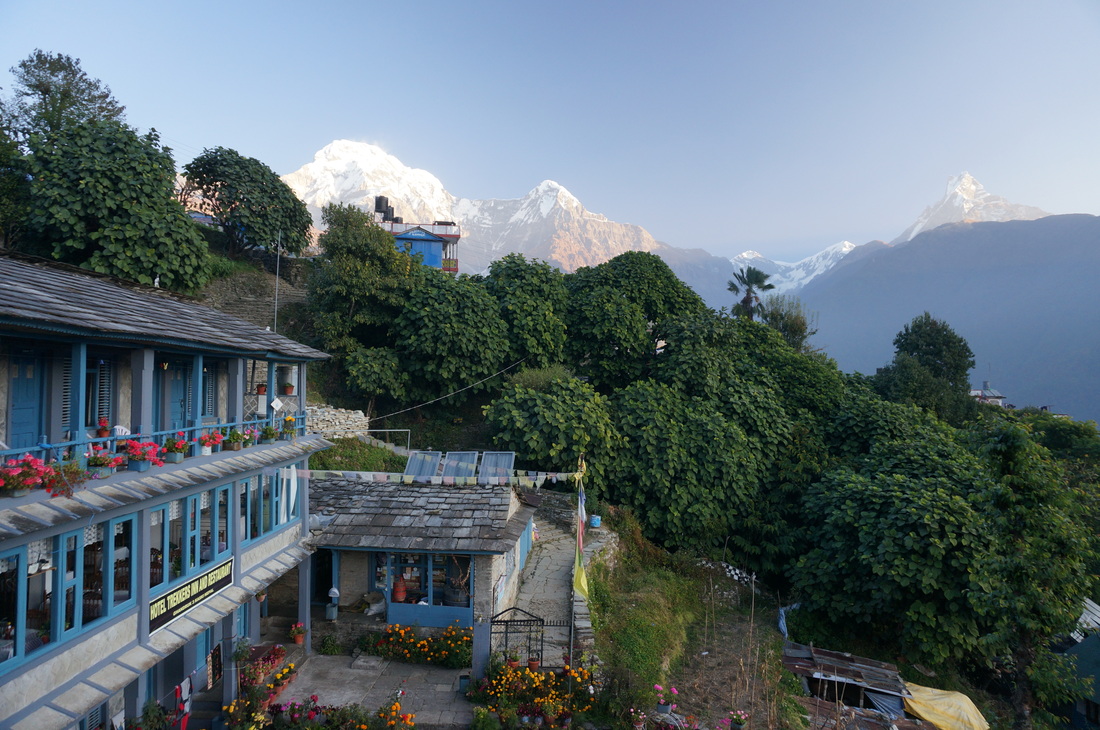Our Himilayan trek (see our last post for details) started and ended in Pokhara, a lake town about 200 kilometers, but a 7 hour drive, from Kathmandu. There's not much to say about Pokhara other than it is a relatively chilled out town full of trekking tourists that offers lots of nice restaurants, cafés, bars and handicraft shops. Some tourists use the surrounding mountains to launch paragliding flights but we were more than happy to just relax for a couple of days by the lake.
We spent the rest of our time in and around Kathmandu, enjoying the buzz of the tourist district (Thamel) at night and exploring the temples and palaces of the surrounding Kathmandu valley during the day.
The first temple we visited, Swayambunath, sits on top of a hill and would offer fantastic views of the Kathmandu valley on a clear day (but thick smog means there aren't many of those). The temple is home to hundreds of monkeys (so is often called the monkey temple), which didn't exactly help our enjoyment of the place. After several months in countries full of monkeys we had come to look at them not as cute little furry animals but as often aggressive rabies carrying thieves.
The first temple we visited, Swayambunath, sits on top of a hill and would offer fantastic views of the Kathmandu valley on a clear day (but thick smog means there aren't many of those). The temple is home to hundreds of monkeys (so is often called the monkey temple), which didn't exactly help our enjoyment of the place. After several months in countries full of monkeys we had come to look at them not as cute little furry animals but as often aggressive rabies carrying thieves.
Our favorite temple in the Kathmandu valley was the Bodhnah stupa, one of the largest Buddhist Stupas in the world. The absence of pesky monkeys and the presence of an adjacent rooftop bar/restaurant meant we were more than happy to spend a couple of hours there.
Hundreds of years ago, the now unified Nepal used to consist of hundreds of small kingdoms, each centered around a 'Durbar Square'. Each square features temples, open courts, water fountains and a royal palace. We visited the three most impressive Durbar Squares, starting with Patan.
Next up, we visited Kathmandu Durbar square, which due to its central location is the most popular among both locals and tourists.
Finally, we traveled out to Bhaktapur, which is the most expansive of the three, featuring several squares and hundreds of historic buildings spread out across dozens of ancient streets.
After seeing the best Buddhist temples Nepal had to offer we headed to the airport, taking an indirect flight to the ultimate Buddhist temple destination, Myanmar.














